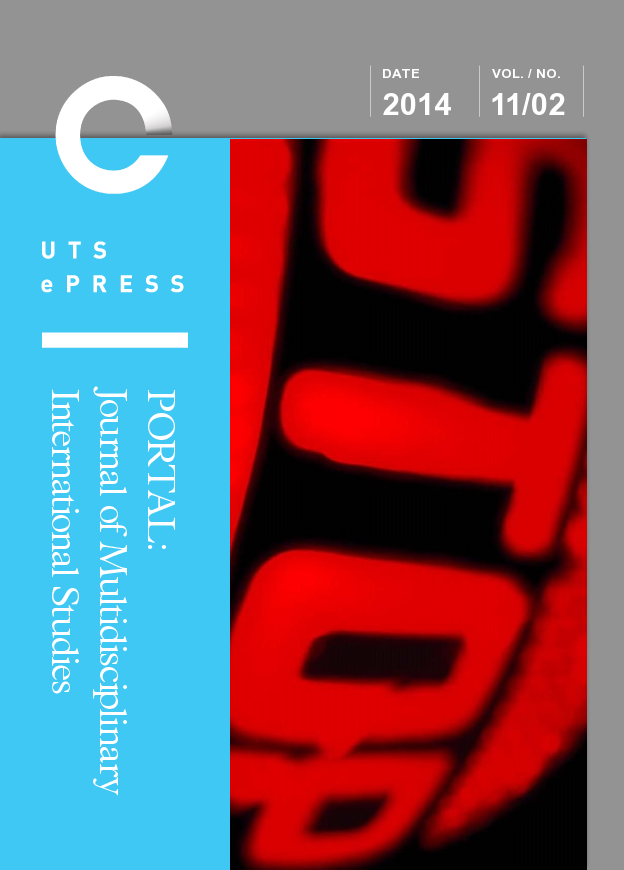Strange Assemblage
Main Article Content
Abstract
This paper contends that the power of Deleuze & Guattari’s (1988) notion of assemblage as theorised in 1000 Plateaus can be normalised and reductive with reference to its application to any social-cultural context where an open system of dynamic and fluid elements are located. Rather than determining the assemblage in this way, this paper argues for an alternative conception of ‘strange assemblage’ that must be deliberately and consciously created through rigorous and focused intellectual, creative and philosophical work around what makes assemblages singular. The paper will proceed with examples of ‘strange assemblage’ taken from a film by Peter Greenaway (A Zed and 2 Noughts); the film ‘Performance’; educational research with Sudanese families in Australia; the book, Bomb Culture by Jeff Nuttall (1970); and the band Hawkwind. Fittingly, these elements are themselves chosen to demonstrate the concept of ‘strange assemblage’, and how it can be presented. How exactly the elements of a ‘strange assemblage’ come together and work in the world is unknown until they are specifically elaborated and created ‘in the moment’. Such spontaneous methodology reminds us of the 1960s ‘Happenings’, the Situationist International and Dada/Surrealism. The difference that will be opened up by this paper is that all elements of this ‘strange assemblage’ cohere in terms of a rendering of ‘the unacceptable.'
Article Details
Section
For submissions from 31st March 2014 onwards, authors who submit articles to this journal for publication agree to the following terms:
a) Retaining Copyright and Granting Rights:
Authors retain copyright and grant the journal the right of first publication. The work is simultaneously licensed under a Creative Commons Attribution License, allowing others to share and adapt the work. Acknowledgment of the work's authorship and initial publication in this journal is required.
b) Non-Exclusive Distribution:
Authors may enter into separate, additional contractual arrangements for the non-exclusive distribution of the journal's published version of the work (e.g., posting to an institutional repository or publishing in a book). Acknowledgment of its initial publication in this journal is required.
c) Online Posting and Citation Advantage:
Authors are encouraged to post their work online (e.g., in institutional repositories or on their website) prior to and during the submission process. This may lead to productive exchanges and earlier and greater citation of the published work (See The Open Access Citation Advantage Service). If authors include the work in an institutional repository or on their website, they must acknowledge the UTS ePRESS publication with relevant details.
d) Creative Commons Attribution (CC-BY) License Awareness:
Authors should note that the CC-BY License permits readers to share (copy and redistribute) and adapt (remix, transform, build upon) the work for any purpose, including commercial use. Proper credit, a link to the license, and indication of any changes made must be provided. The manner of doing so must not suggest endorsement by you or your publisher.
For Volume 10 No 2 (2013) and earlier, the following copyright applied:
Authors submitting a paper to UTSePress publications agree to assign a limited license to UTSePress if and when the manuscript is accepted for publication. This license allows UTSePress to publish the manuscript in a specific issue.
Articles published by UTSePress are protected by copyright, with rights retained by the authors, who assert their moral rights. Authors control translation and reproduction rights to their works published by UTSePress. All rights are reserved worldwide by UTSePress, and downloads of specific portions are permitted for personal use only, not commercial use or resale.
For reprint or usage permissions, please direct inquiries to UTSePress via the journal's main editor, Dr. Nicholas Manganas at [portal.scholarly.journal@gmail.com]. Reprint permission requires acknowledgment of both UTSePress and PORTAL in the format advised by the journal editor.
